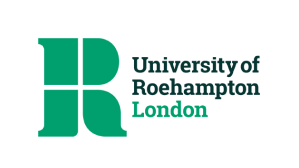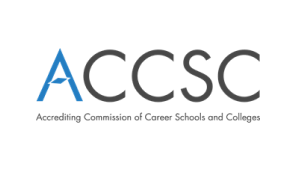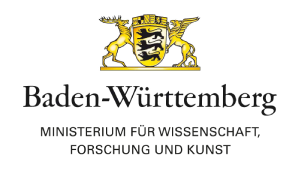F-1 Visa and OPT opportunities represent a golden ticket for international students seeking valuable work experience in the US. To maintain your F-1 status during OPT, you need to follow specific rules to keep your legal standing in the US.
Many students are confused about reporting requirements, employment rules, and documentation needs, and mistakes can have serious consequences. One wrong move, and your dreams of working in the United States may be threatened.
However, there is good news: With recent changes to monitoring systems and stricter enforcement, understanding how to maintain compliance has never been more critical.
It is possible to balance employment opportunities and immigration compliance effortlessly if you use the right strategies. This is not just about rules, it is about securing your future with some practical tips to help you stay compliant while gaining valuable work experience through Optional Practical Training (OPT).
Whether you are already working on OPT or planning your F-1 to OPT transition, these insights will guide you. Learn how to maintain your F-1 status after graduation, stay on track, avoid pitfalls, and even extend your stay in the US through Science, Technology, Engineering, and Mathematics (STEM) programs.
Understanding F-1 Visa and OPT Fundamentals
The relationship between your F-1 Visa and OPT status often confuses students. The F-1 visa allows international students to pursue full-time studies at accredited US institutions. As an F-1 student, you must enroll in a full course load and progress toward your degree program to keep your F-1 student status.
Remember that OPT is an extension of your F-1 student status with added work privileges. You are still bound by F-1 regulations, just with different primary activities.
Your immigration record remains tied to your school, your Student and Exchange Visitor Information System (SEVIS) monitoring continues, and your responsibility to maintain status remains unchanged. The key difference is that your 'educational activity' now happens in a workplace rather than a classroom.
OPT comes in two forms:
- Pre-Completion OPT: Work part-time (up to 20 hours per week) while enrolled in your degree program.
- Post-Completion OPT: Work full-time after studies, typically for 12 months.
Students in STEM fields can apply for a 24-month STEM OPT extension, allowing up to 36 months of work in the US. Understanding these options is key to mastering OPT rules for international students.
What You Need to Know First?
- OPT provides 12 months of work authorization related to your field of study.
- You must complete at least one academic year of full-time study before eligibility.
- Post-completion OPT starts after graduation. You have a 60-day grace period to apply or leave the U.S.
- Employment must directly relate to your major field of study. A marketing graduate cannot flip burgers unless it is a corporate strategy role at a fast-food chain.
- STEM degree holders may qualify for an additional 24-month extension.
- Application timing matters—you can apply up to 90 days before program completion. Exceeding 90 days of unemployment during standard OPT (150 for STEM) risks status termination.
(Pro Tip: Track employment start/end dates. Use spreadsheets or apps like Trello to avoid missing deadlines.)
Key Requirements to Maintain F-1 Status During OPT
Staying compliant with OPT rules for international students requires active attention. Your F-1 status during OPT depends on valid documentation and employment regulations.
You must maintain a valid passport, I-20 endorsed for OPT, and an Employment Authorization Document (EAD) card. Though an unexpired F-1 visa stamp is not required while inside the US, you will need a valid visa for reentry after international travel.
Critical Documentation Requirements
|
Document |
Requirement |
Action Needed |
|
Passport |
Must remain valid |
Renew at least six months before expiration |
|
I-20 |
Must be endorsed for OPT |
Verify OPT recommendation before applying |
|
EAD Card |
Required for legal work |
Carry with you when working |
|
I-94 Record |
Must show F-1 status |
Verify after each US entry |
Reporting Requirements for OPT Students
Meeting reporting requirements for OPT students is non-negotiable for maintaining status. Within 10 days of any change, you must inform your Designated School Official (DSO) about changes to your name, address, employer information, or employment status. Missing this deadline can jeopardize your F-1 student status.

A number of students are unaware that failure to report employment information can result in automatic termination of their SEVIS status, especially in light of recent enforcement measures targeting OPT participants without employer information in the system (1).
(Pro Tip: Keep records like job offer letters handy to prove compliance if needed.)
Employment Rules
Your OPT job must align with your major to meet the F-1 visa OPT requirements. For example, a computer science graduate should work in technology, not unrelated fields like retail, unless it directly applies to their studies. For post-completion OPT, you need to work at least 20 hours per week to count as employed. This ensures you are gaining relevant experience, a core goal of Optional Practical Training (OPT).
Stay Within the Limits
OPT rules for international students are not suggestions; they are non-negotiable. Break them, and you will face consequences like deportation.
Employment Do’s and Don’ts:
- Do: Work at least 20 hours per week for post-completion OPT. Part-time employment will count if they meet the hourly threshold.
- Do: Keep pay slips and offer letters. USCIS might request proof of employment (3).
- Don’t: Take unpaid internships unless they are credit-bearing (CPT). OPT requires paid work.
(Myth Buster: ‘Volunteering counts as employment.' No, it does not. Only paid roles aligned with your major qualifications count as employment.)
Unemployment Limits
The most dangerous pitfall when maintaining F-1 status during OPT involves exceeding unemployment limits. F-1 students are permitted a maximum of 90 cumulative days of unemployment during the standard 12-month OPT period (2).
Exceeding this can end your F-1 status during OPT. As of May 2025, SEVP actively sends notices to students who exceed this limit, potentially leading to status termination within just 15 days.
The clock starts when your Employment Authorization Document (EAD) is issued. If you are nearing the limit, consider temporary roles or volunteering in your field to stay compliant with OPT rules for international students.
Managing Unemployment Days During OPT
Stay under the radar with an unemployment countdown for F-1 status during OPT:
|
OPT Type |
Maximum Unemployment Days |
|
Standard |
90 |
|
STEM Extension |
150 |
Navigating the F-1 to OPT Transition Period
The F-1 to OPT transition confuses many students. Understanding the 60-day grace period after program completion is crucial—this window allows you to prepare for OPT, but you cannot work until receiving your EAD card.
Remember that while waiting for approval, you remain in valid F-1 status as long as you filed properly, However, employment before EAD issuance violates your status regardless of approval confidence.
Timeline Management Essentials
- Apply for OPT 90 days before graduation through 60 days after.
- Plan for potential three to five-month processing times.
- Understand that you cannot begin work until you physically receive your EAD.
- Know that traveling internationally during pending applications carries risks.
- Recognize that part-time campus employment must end with your program.
Travel and Re-entry
Traveling during OPT requires preparation. Ensure your I-20 has a travel endorsement valid for six months, and carry your passport, F-1 visa, EAD card, and proof of employment.
After OPT ends, you have a 60-day grace period to leave the United States, change status, or transfer to another school. Without the proper documents, re-entry can be denied, disrupting your F-1 to OPT transition.
Extend Your Stay with STEM OPT
STEM grads get a golden ticket: a 24-month OPT extension. But qualifying is not easy.
STEM OPT Checklist:
- Earn a degree in a STEM-designated field (e.g., Data Science, Computer Science).
- Work for an E-Verify employer. Check their enrollment status before accepting an offer.
- File Form I-765, 90 days before the current OPT expires. Late submissions = denied applications.
(Source: USCIS)
Did You Know?
Schiller’s MS in Data Science and BS in Computer Science are STEM-certified, making extensions easier.
Benefits of Schiller’s STEM Programs
Students in Schiller International University's STEM OPT-eligible programs gain significant advantages in their practical training journey. These programs not only provide a robust education but also extend your post-completion OPT, giving you more time to build your career.
Our BS in Applied Mathematics and AI, BS in Computer Science, MS in Data Science, and MS in Sustainability Management programs qualify graduates for the 24-month STEM OPT extension, potentially giving you a full 36 months of practical training. This triples your opportunities for professional growth and dramatically enhances your F-1 student status benefits.
Our STEM programs blend academics with employment authorizations, ensuring you meet OPT criteria seamlessly.
STEM OPT Benefits at Schiller
- Extended training period (36 months total versus the standard 12 months).
- Greater flexibility with the unemployment allowance (up to 150 days in total).
- Enhanced competitiveness with employers seeking long-term candidates.
- Additional time to pursue permanent immigration options.
- Stronger employment authorization opportunities in high-demand fields.
Why Schiller?
Our Tampa campus DSOs specialize in OPT guidance, from form submissions to SEVIS updates.
Protect Your F-1 Status Like A Pro
Mastering how to maintain F-1 status after graduation through F-1 visa and OPT compliance is vital for international students. By following reporting requirements, understanding employment regulations, limiting unemployment, and preparing for travel, you can enjoy the full benefits of OPT.
The investment you make in proper compliance protects your immigration record and keeps doors open for future opportunities in the US. Stay compliant by reporting changes, tracking unemployment, and leveraging STEM extensions.
Remember, Schiller’s STEM programs offer a roadmap, but the drive is yours.
 Request information
Request information

